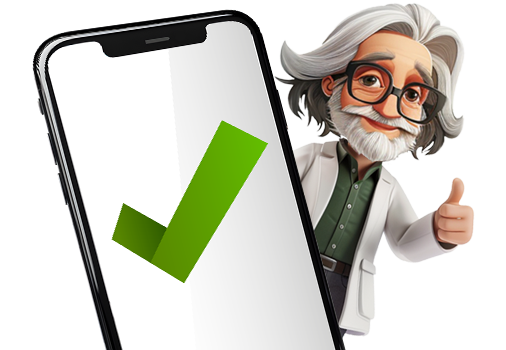Third Party Inspection (TPI) is an important part of the business process. When an impartial inspection is required by a company or business, whether it’s in manufacturing, construction or within other industries, a qualified TPI organisation is employed to assist with quality control and management processes.
For many companies the process is worth the time and expense to ensure the integrity of the manufacturing and roll out process, providing beneficial and unbiased scrutiny for both the manufacturer/seller and end user/buyer. This is particularly important with regards to ISO (International Organisation for Standardisation) standards, maintaining checks for environmental, health and safety, quality and consistency for all kinds of goods across the world. The TPI organisation in this instance would ensure that business systems, goods, factory or manufacturing processes, services and documentation procedures are to ISO standard and comply with agreed international standards.
There are going to be different types of inspection carried out within the TPI process. These might be pre-production, during production (DUPRO) and final inspection. There might be an inspection for loading and shipment. There can also be random or specific inspections. The inspecting third party organisation can be used to monitor manufacturing quality and processes from start to finish. This might involve surveillance of processes as well as of equipment, machinery and for maintaining quality checks. When a TPI organisation has reported back on defects, imperfection or incorrect processes then they have the right to inspect or review any fixes or mitigating measures a supplier has put in place.
Many organisations are now using mobile device software for carrying out inspections and audits before, during and after the manufacturing process. With the NestForms offline mobile survey app there are many components that can be used when creating forms for colleagues carrying out inspections on the ground. NestForms supports both Android and iOS devices. Within the platform a central administrator can create and share an inspection or checklist form quickly and easily.
In the context of inspections it is also worthy of note, the platform is also of benefit to First and Second party inspections as well. First party inspections are carried out by the manufacturer with the Second party normally carried out by the buyer on receipt of equipment or goods. NestForms branded inspection reports can be shared instantly and in different formats by the parties involved within the quality control chain where necessary.
What are the NestForms components and how can they help with third party inspection procedures?
Here is a list of some of the NestForms components that can be used to create the perfect checklist form for third party inspectors working on the ground.
Administrators can include an Edit component that allows for the insertion of free text within a response for any open questions within your inspection survey. The person carrying out the inspection may wish to elaborate or make recommendations on a defect or process.
When creating a checklist form, the Single answer component can be used to allow for the selection of one answer only from a short list. The component can also be used to create a checkbox if only one option is provided. We consider a short list to be around five answer options. An example of this could be to do with a check on a certain piece of machinery, is it working, not working or in need of repair or service?
The Dropdown component can be used to give the inspector the option to insert one choice from a longer list. Within the Dropdown component a default Autocomplete function is displayed for lists over 100 items. The inspector may wish to select an equipment part to be used during a process from a lengthy list. This function can be disabled or left as always on. The administrator can set up the Dropdown component options to include lengthy lists of equipment parts, tools used or processes undertaken.
A Multiple answer component is used to allow the responder to select more than one answer from a list. For example, a third party inspector might wish to tick off what processes have been carried out from a list. With food production and handling there might be a checklist to ensure operatives are wearing the correct protective clothing. The inspector might have a predefined list of clothing needed for a process. They are then able to tick off where hairnets, gloves, aprons, eye protection etc are worn as they see the process during their walk around. 
Images can be inserted into a response where appropriate, either instantly or from the device gallery. It is common for inspectors to take images during third party inspections. This component is used on forms by many of our clients carrying out all kinds of inspections, health and safety, on factory floors and assembly lines, warehouses or vehicle maintenance.
A Signature can be included within a form to sign off inspections as completed and for accountability from managers in areas where the report is taking place. A drawing board will open allowing any signatures to be inserted quickly using a touchscreen. This can also include the client or witness sign off depending on the area of inspection.
A GPS allows the inspecting party to confirm their exact location. There is a check box Allow map select. When you enable Allow map select, you can choose the coordinates within the map view. The reason third party inspectors might wish to use Map select is when they are unable to obtain a GPS signal in certain environments.
A Date and Time component is used on most forms for administrative and time management purposes. Different formats can be displayed depending on which country the third party organisation is operating.
There are different options for displaying how numerical information is collected during an inspection. Numerical information gathered during an inspection can be displayed as charts within the response on the web account. A third party inspection might involve counts, timings, gauge and metre readings.
The Barcode and QR Code reader is very useful when third party inspection of equipment within a shop/factory floor or warehouse and where multiple coded items may require scanning.
An administrator is able to embed clear advice, give instructions or prompts to a responder using a Note component. This is for informative purposes only which the responder will see within the app during the inspection.
The Feature Button determines how the form will be closed off. The responder can be provided with the option to Finish a form completely, or alternatively to finish and start afresh with a new response. A Save button allows the responder to part-fill a form and return to it later. Another function within this component, Clone section, is very useful where the same information is required to be completed multiple times. For example, an inspector might require checks on the same goods or processes at different locations within the premises. The responder can consecutively insert alternative answers to the same questions.
An Auto Capture component can be used for administration purposes. AutoCapture is a hidden field that inserts information without responders' involvement and adds the detail into your reports automatically. An administrator for example might know the name of the inspector but would need to see the name on other parts of the response.
Advanced features
There are many other advanced features within The NestForms mobile survey platform that are of great benefit for the administrator and to the responder in the field. Some of these include being able to select different Export options for working outside of the NestForms Land Survey App. Skip logic can be applied to forms allowing the inspector to bypass inapplicable or irrelevant questions and thus improve the survey performance. An administrator is also able to provide a branded VIP area for different clients involved within the manufacturing, inspection and quality process.
Other advanced features include the ability to customise PDF reports. Custom DB allows third party organisations to prefill internal data into their NestForms responses. Including a Trigger within a form means the administrator can get an automated notification when responses are received into the web account. A trigger can also be set up to show the administrator where manufacturing equipment and machinery gauges have critical readings.
If you would like a chance to try out NestForms, you can sign up for free and your first two weeks begin with a free trial of the system as a premium user.
If you would like to try out the various features that you might find helpful for Third Party Inspection services you can find out more on the NestForms mobile survey app website.
You can also view a short video on how the app works on the homepage.
You can also learn more on how to use our formbuilder by getting a better understanding of NestForms





